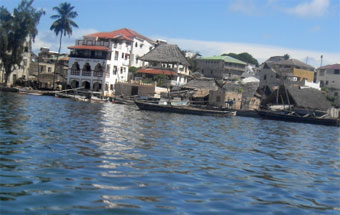By Peter Thatiah
To many, the reality of what is coming up in Lamu town is too good to be true.
The obscure port along the Kenyan coastline is about to rival world famous ports and business hubs like Dubai in the United Arab Emirates.
Never again has Kenya seen a project of such magnitude unfold before their eyes. But the Government Chief Consultant of the Lamu-Addis Ababa-Juba-Kigali corridor project, Dr Mutule Kilonzo, says you can now hold your breath.
When it was first mooted in the early 1970s, the plan was way ahead of the two famous ports in Dubai, which were constructed in the late 1970s. Lamu was to be the ‘little Singapore’ of Eastern Africa.
In 1972, the Government, through the then Ministry of Power and Communications, embarked on a study deemed the most ambitious mission in the region.
But 38 years down the line, Lamu Port is still considered the most ambitious project, estimated to cost Sh1.2 trillion.
By the end of the 1960s, Kenya, then one of the most promising Third World economies, urgently required a second port to cement her position as the regional commercial hub.
Between 1972 and 1975, the Government carried out a study along Kenya’s coastline to establish the best location for a new, bigger port. But that is as far as the project went, until last year when the current administration revived the idea.
Three decades
 |
Lamu Island is set to get a major facelift with the creation of a modern port. [PHOTO: PETER THATIAH/STANDARD] |
The key areas considered fit for a port included Shimoni in Kwale District, where Chinese vessels docked centuries ago at Wasini Island, Kilifi and Manda Bay, which is a few kilometres north of Lamu Island.
An enthusiastic Dr Mutule says today’s team is not concerned with the location, since this was decided more than three decades ago.
The vision to connect Ethiopia, Southern Sudan, Uganda and Rwanda through the Port of Lamu is not new.
In fact, the Ethiopian Government constructed a highway linking Addis Ababa to the border town of Moyale back in 1977. Ethiopia has been waiting for Kenya to do the same since.
Stay informed. Subscribe to our newsletter
Lands Minister James Orengo says the Government has set aside 1,000 acres for the port’s quay. The area is envisioned to become the heartbeat of a new metropolis in a few years. It will also be the nexus of the first ever trans-continental transport complex linking East to West Africa.
A standard gauge railway with bullet trains cruising at 160km per hour will be the hallmark of the network. It will run from Lamu to Garissa, Isiolo, Lokichoggio and finally Southern Sudan. The current train speeds in Kenya can only reach a maximum of 25km per hour, which is considered agonisingly slow for a modern economy.
The network will also provide linkages to Darfur. From Lokichoggio another line will branch off to Uganda and pass on to Bangui in Central African Republic from where it will head to Douala, in Cameroon, thus completing a land bridge between Eastern and Western Africa.
A transcontinental highway will run parallel to the railway envisioned to shorten the route between Asia and West Africa by a half. Once completed, the land bridge will save shippers the long and costly journey through the cape at the southern tip of Africa.
"The project will be in phases. The land bridge will make transporting cargo from Lamu to Douala Port in West Africa take only half a day, which is precisely 12 hours. The complex will rope Kenya to Uganda, Central African Republic, the DRC, Southern Sudan, Ethiopia, Cameroon and Rwanda in a seamless web where goods will be transported faster," says Kilonzo.
Economic boom
Currently, only South Africa, Egypt and Algeria have high-speed railway systems in Africa. But transcontinental railway systems area a new idea in Africa and the Lamu-Douala experiment will be a pioneering case study. The benefits, says Kilonzo, are mind-boggling for the people of the countries where the network will traverse.
"We are going to see an unprecedented boom of economics of conglomeration for the first time. We are also likely to see the emergence of a new city near Lamu that will be a major economic centre for the region," he says.
For a long time, land-locked Ethiopia has always wanted a sea route through Kenya. The current route through Djibouti is not feasible in the future because the port in Djibouti is shallow and small to cater for a population of 85 million people. It is this population Kenya targets through the envisioned Lamu Port. It is the same case for the 15 million people of Southern Sudan.
Even as the completion of the studies for the whole network is awaited by August, some project agencies have started work. The road linking Isiolo to Moyale, which is under construction, is a part of the project. The road from Garsen towards Garissa is also part of the project.
In addition to the port and the transportation network, another jewel of Lamu Port will be an oil refinery. Designed as the biggest and most sophisticated in the region, the modern refinery will be connected to a pipeline running to and from Southern Sudan.
Kenya and China have agreed to prioritise the port’s construction as a pillar project under the Vision 2030. The two countries will appropriate modalities on financing arrangements to avoid any gaps on the resources required. This was agreed at the bilateral talks between President Kibaki and China’s President Hu Jintao during Kibaki’s recent visit to China.
So far, the march towards the glittering reality looks unstoppable.
 The Standard Group Plc is a
multi-media organization with investments in media platforms spanning newspaper
print operations, television, radio broadcasting, digital and online services. The
Standard Group is recognized as a leading multi-media house in Kenya with a key
influence in matters of national and international interest.
The Standard Group Plc is a
multi-media organization with investments in media platforms spanning newspaper
print operations, television, radio broadcasting, digital and online services. The
Standard Group is recognized as a leading multi-media house in Kenya with a key
influence in matters of national and international interest.
 The Standard Group Plc is a
multi-media organization with investments in media platforms spanning newspaper
print operations, television, radio broadcasting, digital and online services. The
Standard Group is recognized as a leading multi-media house in Kenya with a key
influence in matters of national and international interest.
The Standard Group Plc is a
multi-media organization with investments in media platforms spanning newspaper
print operations, television, radio broadcasting, digital and online services. The
Standard Group is recognized as a leading multi-media house in Kenya with a key
influence in matters of national and international interest.








